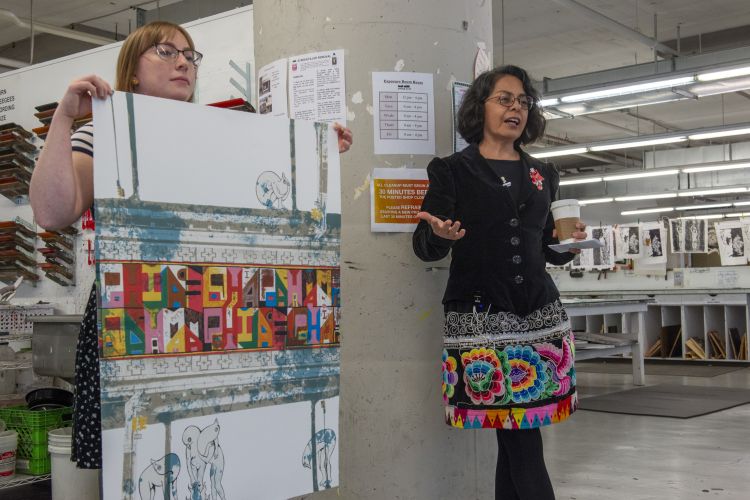STORIES FROM PAFA
Lowry Burgess
Lowry Burgess (Cert. ’60) contributes to the history of PAFA alumni who have had a profound effect on the art world not only through their artistic works, but also because of their ideas about art. For over two decades, Burgess worked in many capacities at the Center for Advanced Visual Studies at the Massachusetts Institute of Technology and is currently a professor and Distinguished Fellow in the STUDIO of Creative Inquiry at Carnegie Mellon University.
Considered a pioneer of the Space Art movement, Burgess’ work isn’t just international, it’s universal. In 1989, he was one of the first artists whose work NASA officially took into space. While serving on the National Humanities Faculty, he was the creator of international curricula for the arts and humanities. In the years since his graduation from PAFA Burgess has also received awards from The Rockefeller Foundation, the Guggenheim Foundation and the National Endowment for The Arts, among others.
In 2001, Burgess wrote The Toronto Manifesto: The Right to Historical Memory, in response to destruction of religious relics in Afghanistan. In the essay, Burgess appealed to the idea of artifacts as shared cultural property that speak to the history of a people and need to have an internationally shared value system. “Globally shared, this common value is the seed bed of new relationships, ideas, and insights — the fertile ground for the imagination of the world.”
After the publication of The Toronto Manifesto, Burgess worked on getting organizations to consider enacting its core principals, and the organizations who undertook discussing the new ‘value system’ included Carnegie Mellon University, New York’s Interfaith Center, Ochahnomizu University in Tokyo, and the United Nations Educational Scientific and Cultural Organization.
“To be effective,” Burgess says of the value system set forth in the manifesto, “conservation and preservation must garner economic rewards within the global finance system. Commitments to historic preservation must be seen in global finance as a new form of value — a value that does not move — a timeless value of enormous worth — a historic commonwealth.”



